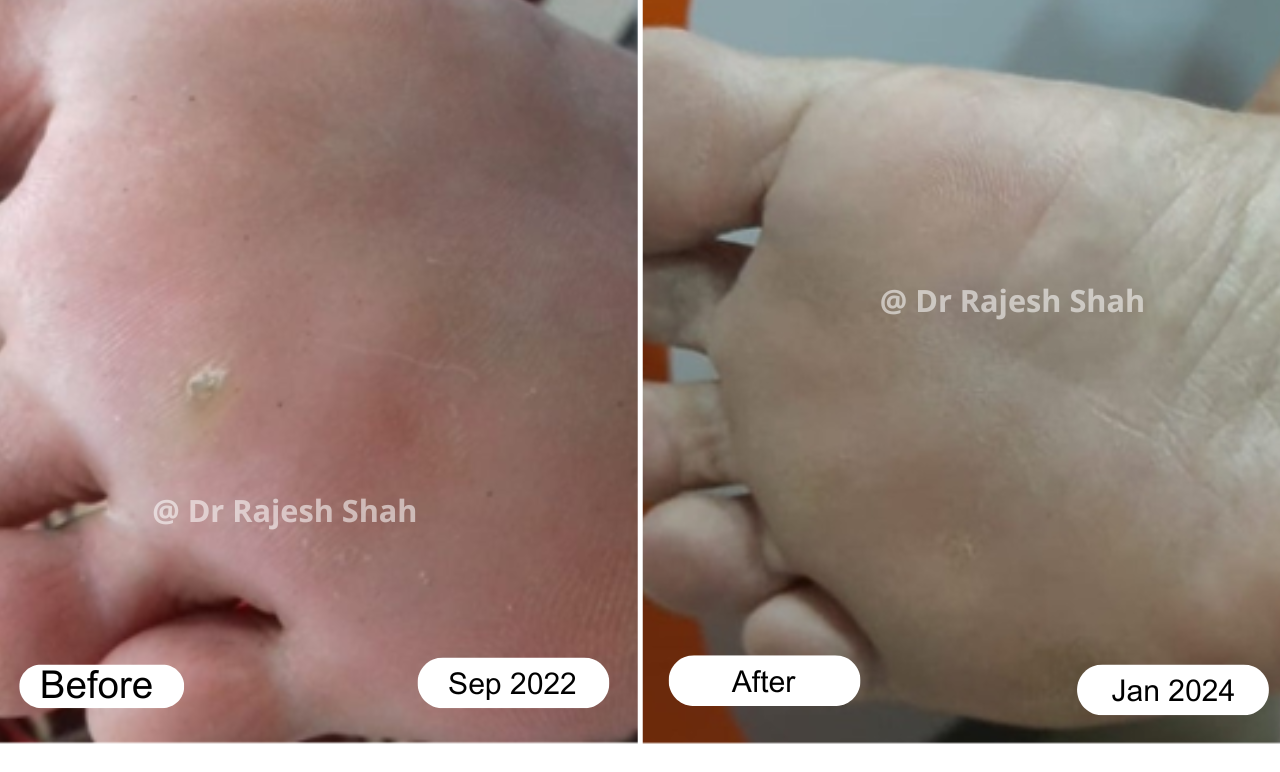Walking tall, journey from chronic Corns to complete wellness
.jpeg) A 63-year-old woman (Patient ID: 49160) presented at our clinic in September 2022 with a recurring issue of corns on her right sole. This problem had persisted for the past five years, prompting previous surgical interventions and trials of homeopathic remedies, which yielded no significant improvement. The affected area exhibited characteristics typical of corns: it was hardened, rough, scaly, and tender, causing discomfort and hindering her mobility.
A 63-year-old woman (Patient ID: 49160) presented at our clinic in September 2022 with a recurring issue of corns on her right sole. This problem had persisted for the past five years, prompting previous surgical interventions and trials of homeopathic remedies, which yielded no significant improvement. The affected area exhibited characteristics typical of corns: it was hardened, rough, scaly, and tender, causing discomfort and hindering her mobility.
The patient also suffered from Diabetes and Hypertension for which she was taking conventional medications. Her blood sugar levels were always borderline raised and she had been diagnosed with anemia, for which she received supplements.
The patient had a gentle nature and a strong attachment to her family. In recent years, she had been deeply troubled by conflicts in her son's marital life, which led to her daughter-in-law and grandson living separately. This separation weighed heavily on her heart, and she longed to see them reunited.
Aside from her asthma and diabetes mellitus, there was no family history of corns.
After reviewing her case, Dr. Shah prescribed a six-week course of homeopathic medicines decided to her specific needs.
During her consultation, the patient received guidance on foot care practices, including recommendations for appropriate footwear selection. Additionally, she was educated on dietary adjustments and lifestyle modifications aimed at enhancing her overall health and well-being.
Follow-ups:
During the initial follow-up, there was no discernible improvement in the patient's condition. Consequently, Dr. Shah extended her medication regimen for another six weeks. The patient was once again reminded of foot care practices and the importance of appropriate footwear.
After completing 12 weeks of treatment, there was a noticeable reduction in the size of the corn, and the patient reported a significant decrease in pain and tenderness. Upon examination, the affected area appeared softer, with a flatter surface and no tenderness.
Based on this progress, Dr. Shah adjusted her medication for continued improvement. Over the subsequent six to twelve weeks, the patient experienced a 50 to 60% reduction in her symptoms and could walk without discomfort.
By the seventh to eighth month mark, the corn had detached itself, and the affected area had softened further, allowing the patient to walk for extended periods without discomfort.
The patient adhered to the treatment plan for a few more months as advised, eventually achieving a complete cure.
Conclusion:
This case underscores the efficacy of homeopathic medicines in managing chronic, recurring corns. Despite the challenge of pre-existing unstable Diabetes Mellitus, the patient achieved full recovery under Dr. Shah's expert guidance.
